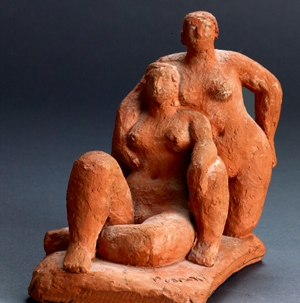An important part of the critic’s role is to search out artists, living or dead, whose work has disappeared from general view, and to attempt some kind of reassessment of their value. The trouble with most coverage of the visual arts today is that the same few artists are constantly written about because their work is currently fashionable. Editors seem not to encourage their critics to be wide-ranging. Meanwhile, museums and galleries are not readily inspired to put on exhibitions of less well-known painting and sculpture because they’re primarily concerned with high visitor attendance and sales. As a result, the public is not best served — and neither are the artists. In an attempt to buck the trend, this review focuses on a painter and a sculptor who both deserve serious scrutiny.
Derek Hyatt was born in Ilkley in 1931, and has lived most of his painting life in Yorkshire where he still works. After an early training at Leeds and Norwich art schools, he came to London’s Royal College of Art (1954–8), and soon began to exhibit his work professionally. He showed with Waddington’s in the 1970s, and then briefly with Austin/Desmond, and although he’s had 50 one-man shows since 1958, he hasn’t exhibited in London for nearly 20 years, so his work is no longer familiar to the capital’s gallery-going public. Inevitably he’s better known and appreciated in the north of England, but it’s about time his remarkable paintings were made more widely available. Art Space Gallery’s new show is thus highly opportune.
Hyatt paints on board, rather than canvas, so he can keep altering the image, rubbing back and restating his intentions. He likes to quote the Italian historian Giambattista Vico’s definition of imagination as ‘the memory rearranged’, and this is his own approach to painting the landscape that he loves.







Comments
Join the debate for just £1 a month
Be part of the conversation with other Spectator readers by getting your first three months for £3.
UNLOCK ACCESS Just £1 a monthAlready a subscriber? Log in